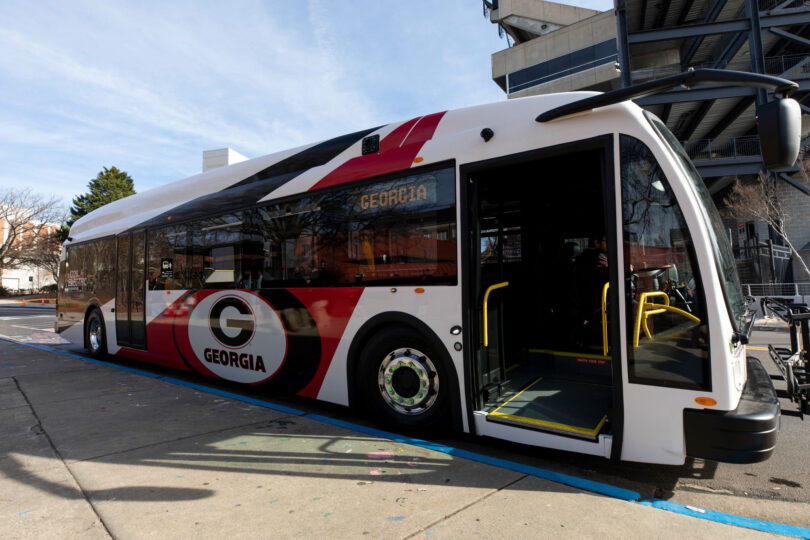The University of Georgia currently has one of the largest fleets of electric buses in American higher education. Now, a $7.2 million grant from the Federal Transit Administration will enable UGA’s Transportation & Parking Services to acquire up to eight additional all-electric buses.
Secured in partnership with the Georgia Department of Transportation, the grant marks another leap forward in UGA’s commitment to operational sustainability and efficiency in campus transit. The expansion of its electric bus fleet will improve campus mobility, reduce the university’s environmental impact, and offer more reliable and modern transportation options.
“These new electric buses represent a substantial step forward in UGA’s ongoing pursuit of sustainability,” said TPS Director Todd Berven. “They will not only enable us to reduce our carbon footprint but also enhance the overall quality of transportation services we provide to our students, faculty, staff and visitors.”
Introducing additional electric buses will help UGA continue to make strides toward a greener future. The new buses produce zero tailpipe emissions, contributing to improved air quality on campus and reduced greenhouse gases. They also provide dependable service, making it easier for the university community to navigate campus efficiently, and offer a quiet, comfortable ride while further encouraging the use of sustainable transportation options and reducing traffic congestion.
TPS’ commitment to sustainable transportation aligns with the university’s broader goal of fostering a campus that prioritizes environmental stewardship. This grant not only exemplifies UGA’s dedication to creating a cleaner and more sustainable campus environment, but also positions the institution as a model for others to follow.








